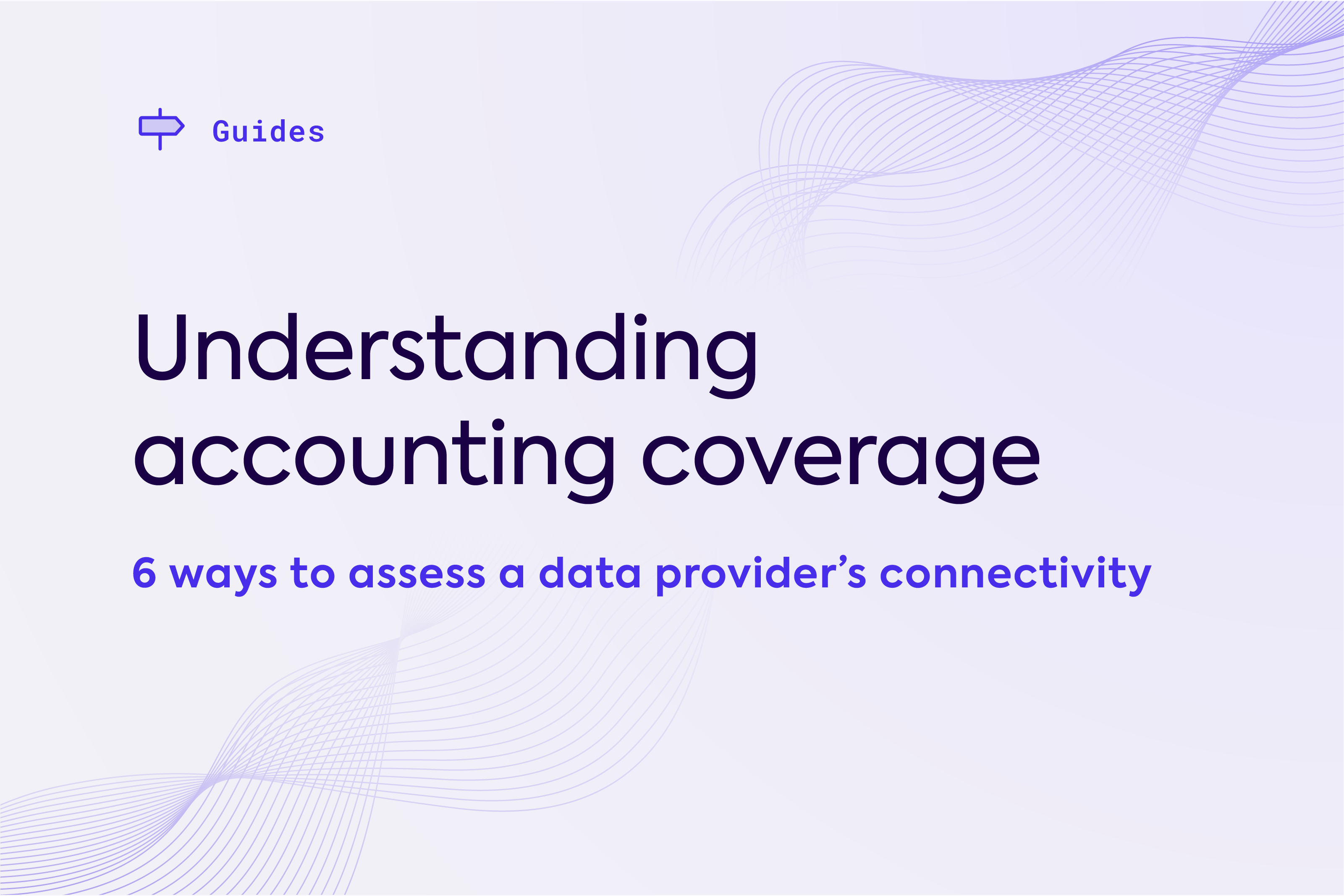
Asking the right questions can help you access more data through fewer APIs—so you can build smarter, faster, and wider-reaching solutions.
You rely on accounting integrations to better understand your SMB customers’ finances, automate and customize your services, and generate new product opportunities.
The problem? The accounting software market is heavily fragmented, and the platforms SMBs use vary by company size, industry, and geography. For instance, our research shows that QuickBooks Online leads in the US with a 49.3% total share, but Sage Intacct and NetSuite top the mid-market. And in the UK, frontrunner Xero captures only 24% of SMBs, with the rest split among alternatives.
That means integrating with one platform might cover half of your customer base, but expanding into the other half—not to mention a new region or vertical—would require many incremental builds and many rounds of maintenance, quickly draining your development resources and distracting from your core product.
A third-party data provider can help you keep costs and workloads low and build faster by connecting you to multiple accounting platforms through a single API.
But not all providers are created equal when it comes to coverage. Many specialize in just one data type, region, or use case, limiting your ability to scale and to realize the full benefits of integration.
In this post, we explore six criteria you can use to evaluate a potential provider’s coverage and share specific questions you can ask to ensure their integrations are on point.
1. Breadth
When assessing accounting coverage, it all starts with the numbers.
In today’s tech-forward business world, SMBs expect solutions to integrate seamlessly with their existing platforms. And, at the most basic level, connectivity is black and white: Your product either syncs with the financial platform a customer uses, or it doesn’t.
In a recent survey, Codat found that as many as 41% of SMBs would reject an application outright that’s unable to integrate with their preferred accounting software.
To determine the range of accounting systems and data sources a provider connects to and how many SMBs use those systems, you can ask questions like:
- Which accounting platforms do you cover?
- What percentage of SMBs do you service in the area(s) we operate in?
- What percentage of SMBs do you service in the area(s) we hope to expand into?
- Do you publish reports that openly list your integrations?
- How does your coverage break down by business size, industry, and use case?
This will help you decide if a provider supports a broad enough share of your customer base.

2. Growth
You don’t just want to know that a vendor covers a good number of accounting platforms right now. You also want to know that their coverage is expanding and will connect you to a greater number of platforms and SMBs over time.
To get at a data provider’s potential, consider asking:
- What is your strategy for expanding coverage?
- What do you prioritize when selecting and integrating new platforms?
- Which accounting platforms do you currently have in your pipeline?
- Do you offer glimpses into your product roadmap?
- How have you primed your infrastructure for growth?
The best providers have integration plans that are effortlessly scalable and can help your business adapt quickly as the accounting software market evolves.
3. Depth
With accounting integrations, coverage isn’t only about accessing data but accessing the right data. There are many different endpoints a provider could offer, and they may or may not be the ones you need to build your solutions.
To understand the precision of a vendor’s data, ask questions like:
- What data types do you support?
- Which endpoints and how many attributes do you include?
- Do you provide continuous, real-time data access?
- Is your process transparent—i.e., do you make your docs publicly accessible?
That way, when it comes to developing your product, you won’t be left scrambling for critical data points that have been overlooked.
4. Expertise
The accounting software landscape is changing fast. According to one report, it’s expected to reach a global market size of $20.4 billion by 2026 as demand for frictionless finance grows.
You need a data provider that keeps abreast of industry trends and best practices, has a finger on the pulse of the SMB market, knows how to keep their APIs at peak performance, and backs up their solutions with solid insights and strong customer support.
To get a sense of a vendor’s competence, ask them:
- How do you stay informed about shifts in the accounting software market?
- How/how often do you upgrade and maintain your integrations?
- How do you address new errors and edge cases?
- How many calls are made to your API each month?
- How do your integrations operate at scale—i.e., have they been stress-tested for heavy request loads?
- How do you handle client relationships? Who can I turn to for help?
This will ensure your provider’s coverage isn’t just growing, but growing parallel to the market—and that their team is up to the task.
5. Intelligence
It’s one thing to get access to data; it’s another to have it structured in a usable format that’s easy to input, interpret, and apply. While most accounting systems do similar things, an invoice in one may be labeled differently in another—and no development team wants to do the work of translating between irregular data models.
To gauge the quality of a provider’s data, you can ask questions like:
- How is your data structured?
- Do you standardize connectivity across different data sources?
- What analytical tools, metrics, and data mapping features do you offer your customers?
- How do you minimize the need for manual data processing?
You want to make sure your ultimate data output is standardized across accounting platforms, so you get clear information you can work with efficiently.

6. Trust
One of the most important aspects of your integrations is the user experience SMBs will encounter on your platform. It’s essential to bolster their journey with a reputable and trustworthy data provider if you want customers to convert.
To size up a potential vendor’s reputation, ask them:
- What does a typical user flow look like with your platform?
- Is your product white-labeled? How much friction will SMBs experience when they link?
- How do you keep users’ data secure? What compliance measures do you meet?
- Who have you worked with? Do you have any customer testimonials, results, or case studies you can share?
Getting these answers early and upfront will ensure you find a serious, well-respected partner that inspires confidence among your team and your customers.
What Codat does differently
Codat is committed to providing industry-leading accounting coverage that’s fully accessible.
You can download our accounting software guide to see the exact number of platforms and SMBs we support across different regions and categories. We also make our roadmap public, so you can weigh in on upcoming products and features.
If you want to learn more about what a fresh take on accounting data can do for your business, sign up for a free account and connect with a Codat specialist using the contact form below.
